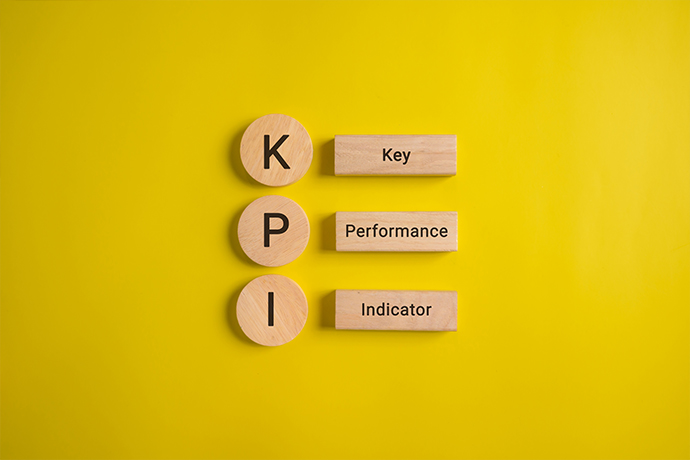 SPEAKERS
SPEAKERS
 TOPICS
TOPICS
Unlock the power of customer experience metrics and enhance your brand's reputation. Dive into key metrics that shape customer satisfaction and loyalty in today's competitive market.

Building a stellar customer experience is more than just delivering a product. It's about crafting an emotional journey at every touchpoint. As organisations strive to create these memorable experiences, they must be strategic in their approach. This means understanding and leveraging customer experience management metrics that truly reflect the customer's voice.
In today's rapidly evolving market, businesses realise the importance of focusing on key customer experience metrics to maintain their competitive edge. These metrics provide insights into customer behaviour and preferences, enabling brands to tailor experiences that resonate deeply. But how do you measure customer experience? Let's embark on this journey together and unveil the secrets behind effective customer experiences that resonate with authenticity and trust.

A well-crafted customer journey helps brands stand out. Each interaction is an opportunity to leave a lasting impression, making everything from initial contact to post-purchase support crucial. Effective use of metrics for customer experience enables brands to refine every aspect of this journey, ensuring consistency in quality and service. As customers today have more choices than ever, ensuring loyalty hinges on creating an environment that fosters trust and engagement.
Recognising the power of these metrics ensures they remain relevant and top-of-mind for consumers. More than just data, they are tools for crafting personalised experiences that speak directly to individual needs and preferences. Brands that actively engage with these insights can anticipate changes in consumer behaviour and stay ahead of the curve.
As often underlined by famous business speaker Alan Moore, the right metrics for customer experience are crucial for a brand's success. They provide insights into what drives customer loyalty and satisfaction. Integrating these metrics into a brand's strategy ensures they address customer needs effectively. Moreover, by understanding these metrics, businesses can fine-tune their offerings and cater to evolving market demands.
Such careful tracking allows brands to see the bigger picture. It reveals patterns and trends in consumer behaviour that might otherwise remain hidden. With this knowledge, companies can make informed decisions that enhance the customer journey. Additionally, employing customer service metrics to measure their performance helps them stay ahead of competitors. Not only do these metrics encourage consistency, but they also promote innovation as brands seek new ways to exceed customer expectations.
Ultimately, understanding how to measure customer experience means empowering brands to connect more deeply with their audience. It's about creating meaningful relationships that stand the test of time, ensuring that every interaction reinforces brand loyalty and trust.

Delving into customer service metrics to measure can be quite illuminating. These metrics offer a window into understanding and improving customer interactions:
Understanding and implementing these metrics for customer experience is pivotal for brands aiming to not just fulfil basic needs but exceed expectations. As marketing speakers constantly advise, brands that master the art of measuring and acting upon these insights can secure a competitive edge by aligning strategies with customer desires.
Renowned speaker Caspar Craven frequently states that once brands understand how to measure customer experience, they can act decisively. Implementation involves leveraging data to make meaningful changes. This adaptation aligns brand offerings with evolving customer expectations, enabling a seamless integration of insights into decision-making processes.
Further, the effective implementation of customer experience management metrics can drive improvement across various touchpoints. Regularly reviewing these metrics facilitates a more personalised engagement strategy, encouraging brands to innovate continuously.
Moreover, utilising data-driven strategies empowers staff at all levels, fostering a culture of continuous improvement. When teams are equipped with the insights derived from metric analysis, they perform with greater empathy and efficiency.
Customer feedback serves as a guiding light, illuminating areas for improvement. It acts as a mirror, reflecting how well a brand meets customer expectations. When feedback is aligned with metrics for customer experience, brands can prioritise necessary changes and drive impactful transformations.
In his years of career as a GM and an advocate for building customer-first solutions, Adolfo Fernandez Sanchez always emphasised that encouraging ongoing dialogues with customers helps build trust. It fosters an environment where customers feel valued and heard, leading to stronger relationships. Regular feedback loops create a dynamic interaction, ensuring that brands remain agile and adaptive.
Embracing feedback as a critical component of customer experience management metrics ensures that brands stay attuned to customer sentiments. This alignment transforms feedback from a mere evaluative tool into a strategic asset, capable of guiding growth and elevating brand narratives.

We have already discussed the importance of customer experience in terms of the success of a business. Here are some tips to enhance your brand’s customer experience in the real world:
Incorporating these tips ensures brands remain competitive in a saturated market. Furthermore, engaging with expert marketing and sales speakers can inspire teams to embrace a customer-centric approach, potentially unlocking new insights and strategies that are pivotal for maintaining momentum.
The journey towards excellence in customer experience is continuous. By focusing on the right metrics and implementing effective strategies, brands can elevate their offerings and foster lasting customer loyalty. The path is challenging but rewarding, and with dedication and insight, remarkable customer experiences become clearer and achievable for all businesses.